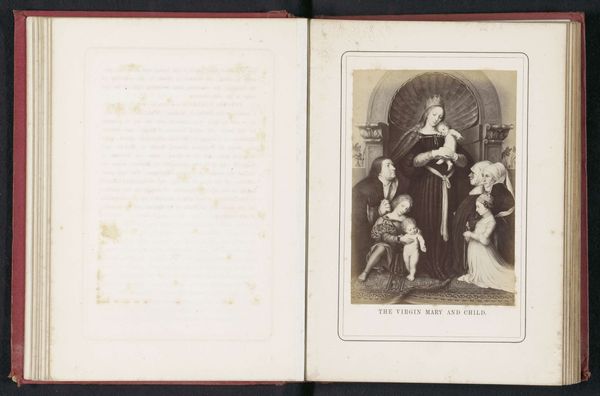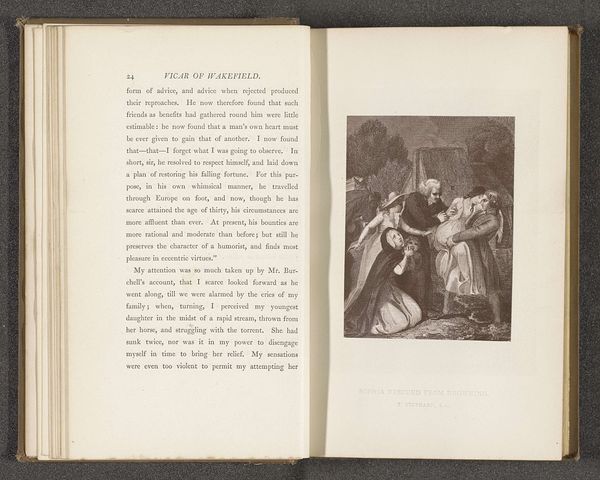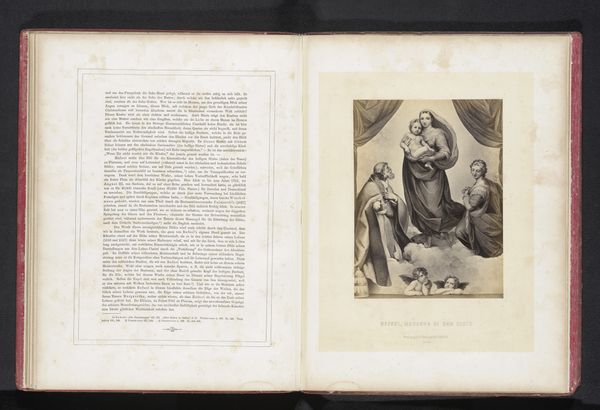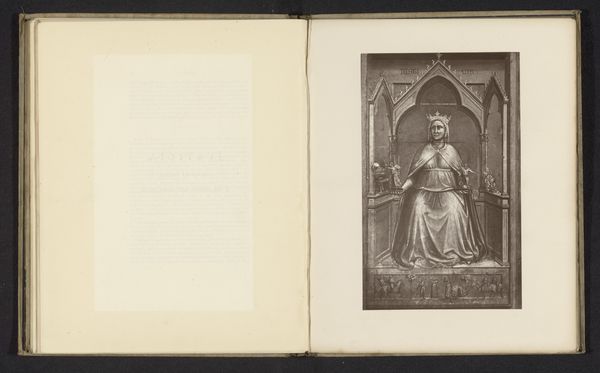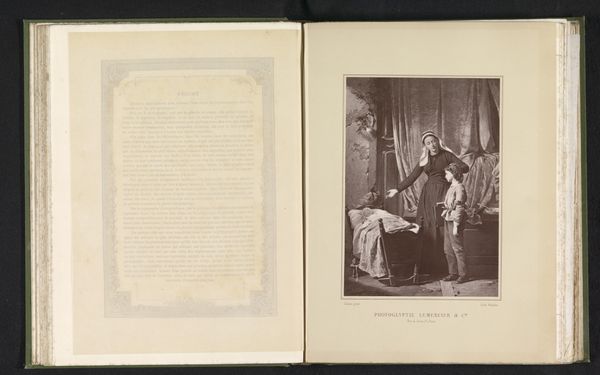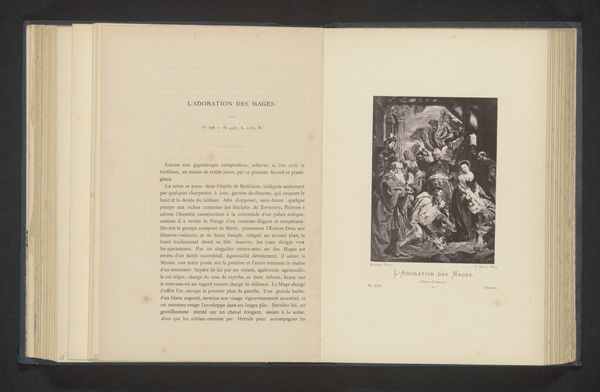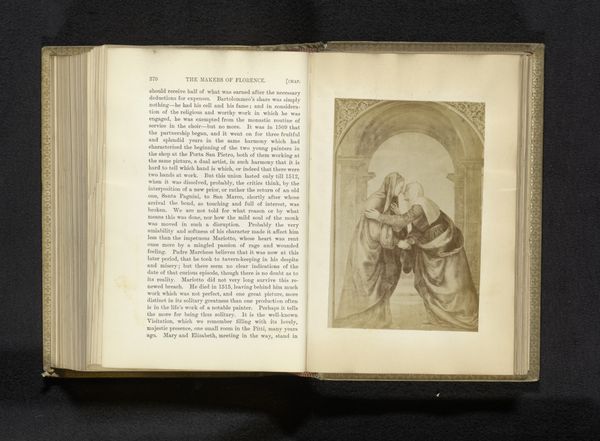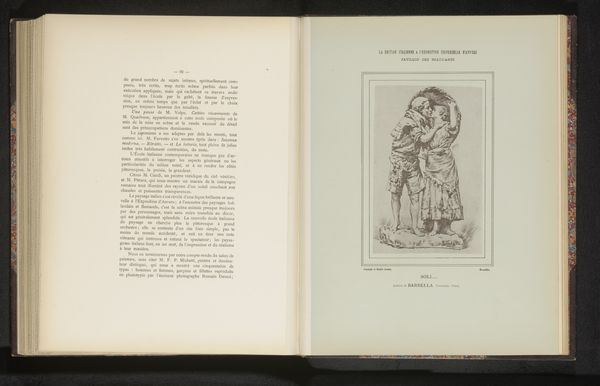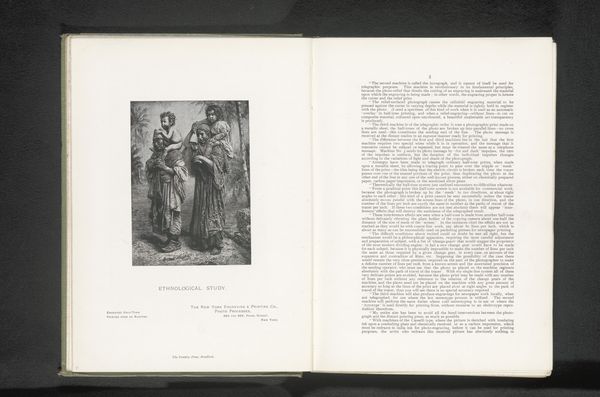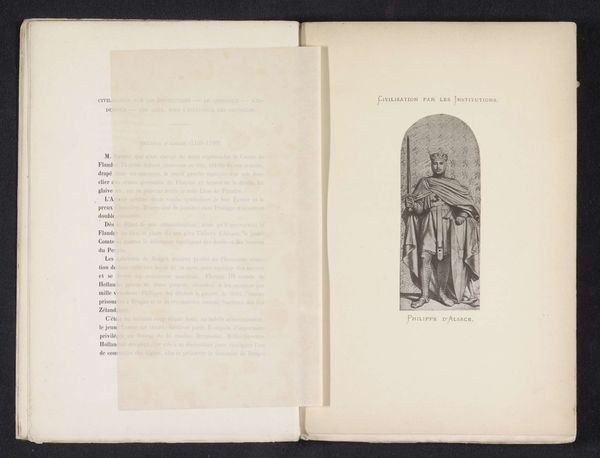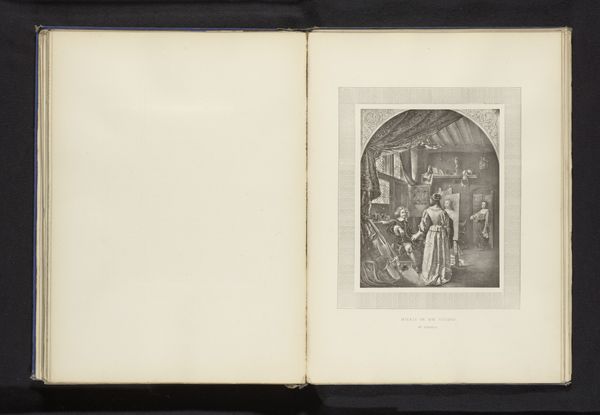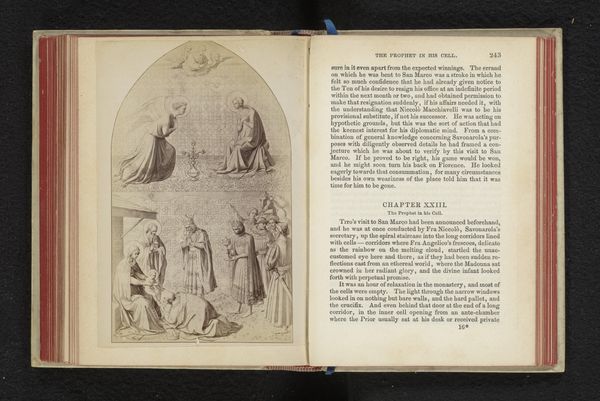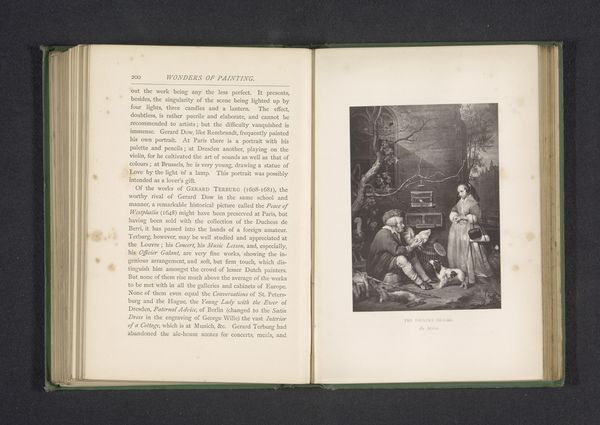
Fotoreproductie van een prent naar de Darmstadt Madonna door Hans Holbein before 1871
0:00
0:00
anonymous
Rijksmuseum
print, engraving
#
portrait
#
narrative-art
# print
#
11_renaissance
#
group-portraits
#
history-painting
#
northern-renaissance
#
academic-art
#
engraving
Dimensions: height 124 mm, width 83 mm
Copyright: Rijks Museum: Open Domain
Curator: Here at the Rijksmuseum, we have "Fotoreproductie van een prent naar de Darmstadt Madonna door Hans Holbein," a photo reproduction of a print based on Hans Holbein's "Darmstadt Madonna." The piece dates back to before 1871 and beautifully showcases engraving techniques. Editor: My initial reaction is one of serenity mixed with formality. The stark black-and-white engraving captures the composition with clarity. There’s an emphasis on geometric shapes formed by the grouping of the figures; and of course the contrast, crucial to understand light in this image. Curator: Indeed. Holbein was a master of composition. What strikes me is how Holbein has arranged the figures. We can consider not only the geometric grouping that you pointed out, but also what that suggests to viewers. Note how he organizes the figures around a central axis with the Madonna and child, which lends the image a hierarchical balance, reinforced by the arched architectural detail that frames Mary’s figure at the top. Editor: Precisely. Beyond structure, the artwork's power is rooted in its symbols. The Madonna, naturally, is central, but the presence of the donors suggests a specific story. I find it particularly moving how Holbein has visually fused the sacred with the mundane, integrating these familial figures. Curator: Interesting, because the symbols serve compositional purposes, as well as narrative. The implied lines connecting the gazes of the figures within the group invite us into their space. Those kneeling figures exemplify a key element: perspective. The diminution of scale subtly reinforces the divine importance of the Madonna, seated on what can clearly be distinguished as a high and therefore elevated plane. Editor: Looking at the children in this image, one cannot but reflect on notions of piety, and childhood’s inherent innocence. The image also makes me think of mortality. Holbein frequently embedded memento mori symbols within his compositions— Curator: The formal elements enhance this idea as well. Holbein makes full use of stark monochrome to highlight detail. Each line accentuates a specific plane, adding contrast where others may blend to soften what’s portrayed. The effect is not so much photorealistic as, well, ideational. The figures represent the themes of sacred offering and reverence, rather than recreating reality as perceived through vision alone. Editor: I appreciate how this photo reproduction captures that essence. Holbein’s original work is powerful, but there's something especially interesting about viewing it filtered through the lens of printmaking and photography, especially regarding our evolving relationships with historical artistic canons. Curator: Absolutely. I am fascinated by how different eras reimagine historical motifs to address modern sensibilities, and it feels like that's what’s happening here as we consider a photograph of a print, after the initial painting.
Comments
No comments
Be the first to comment and join the conversation on the ultimate creative platform.

